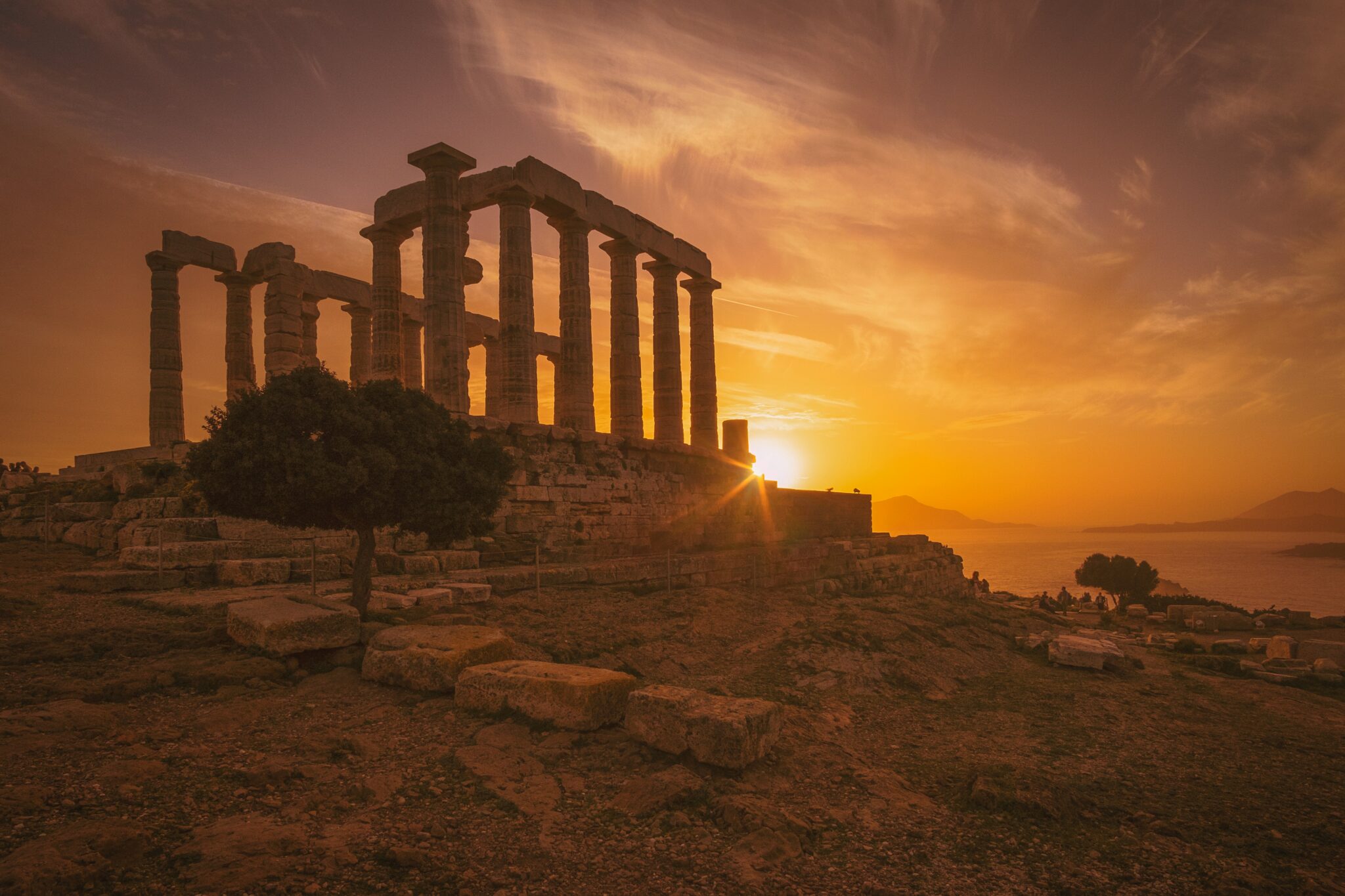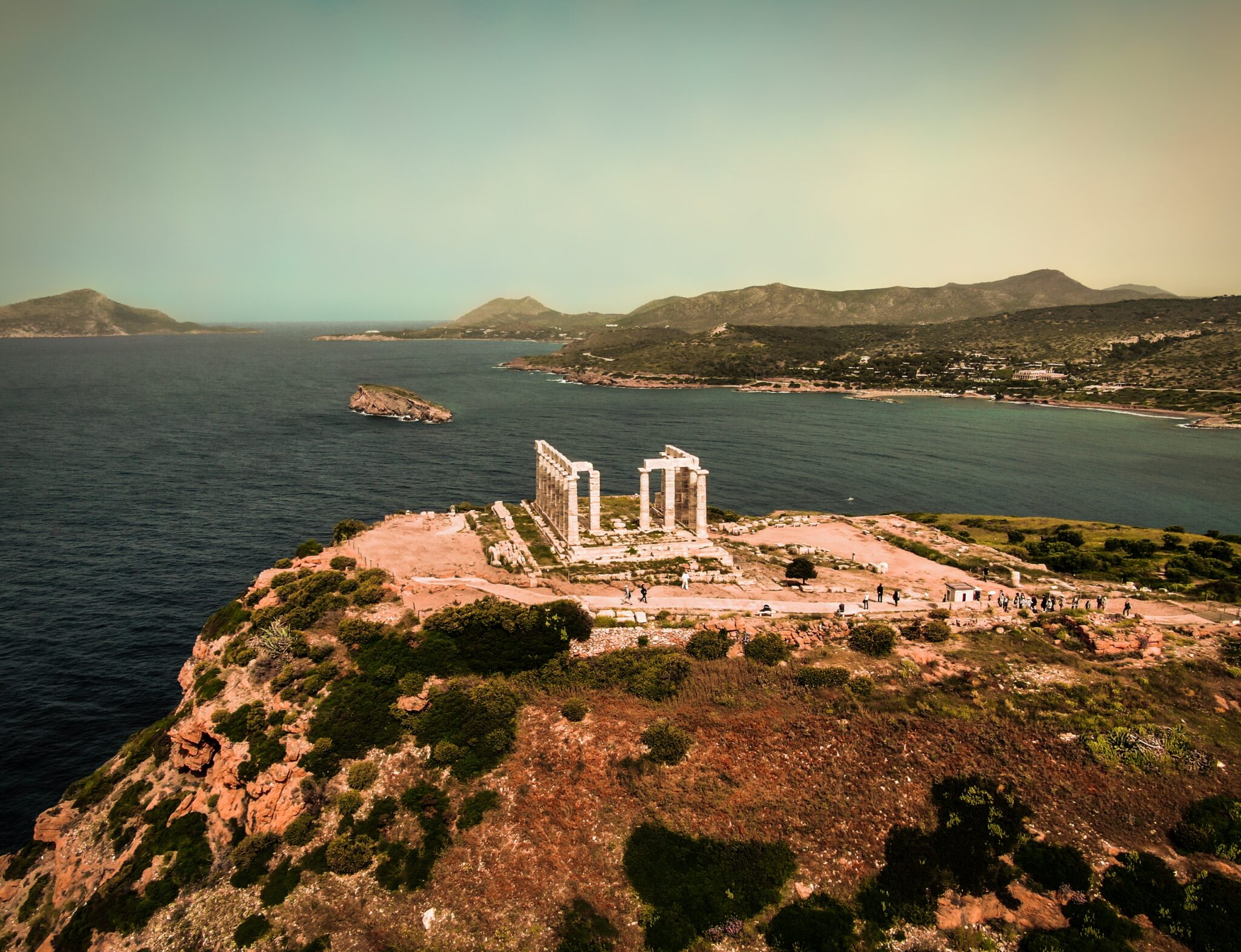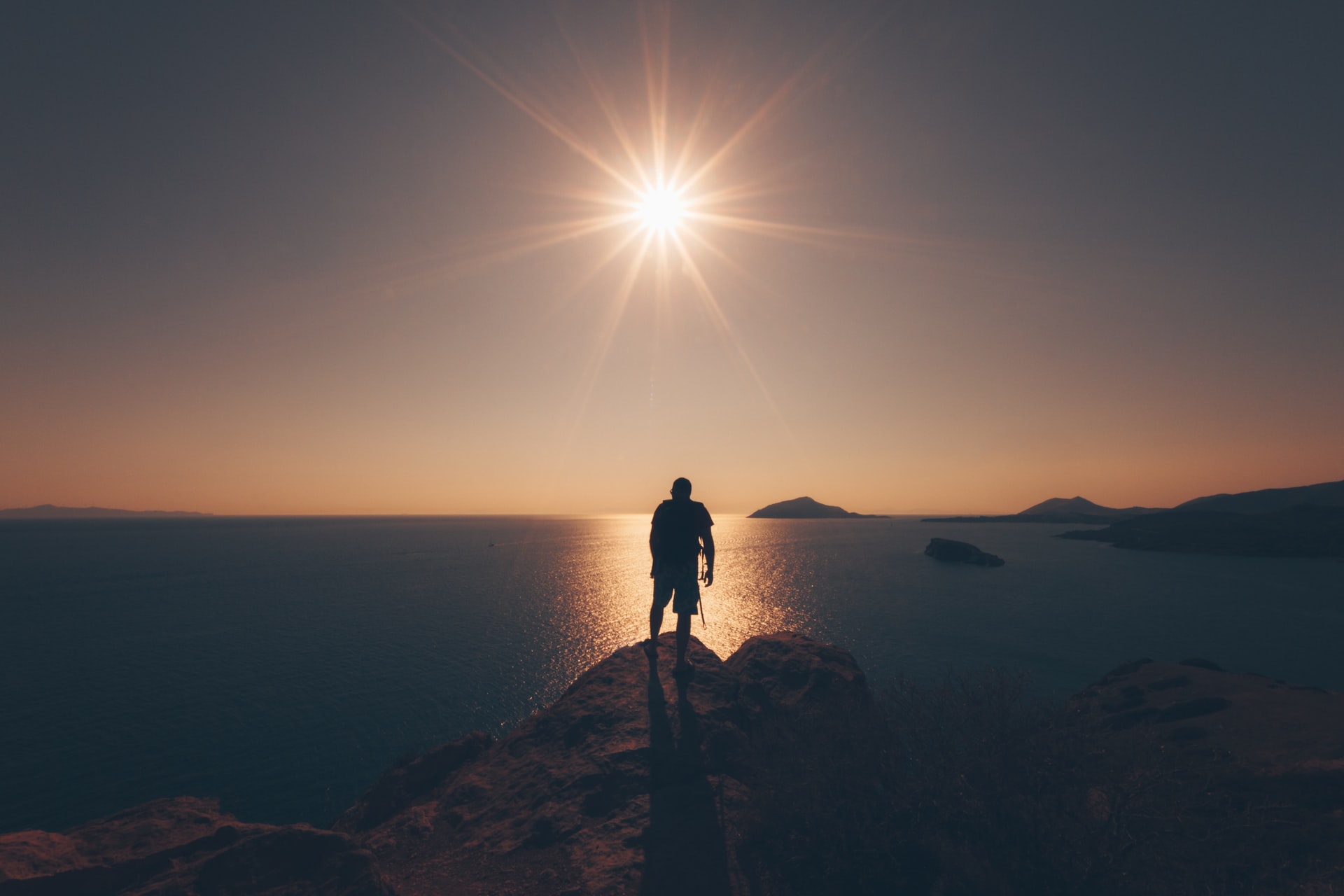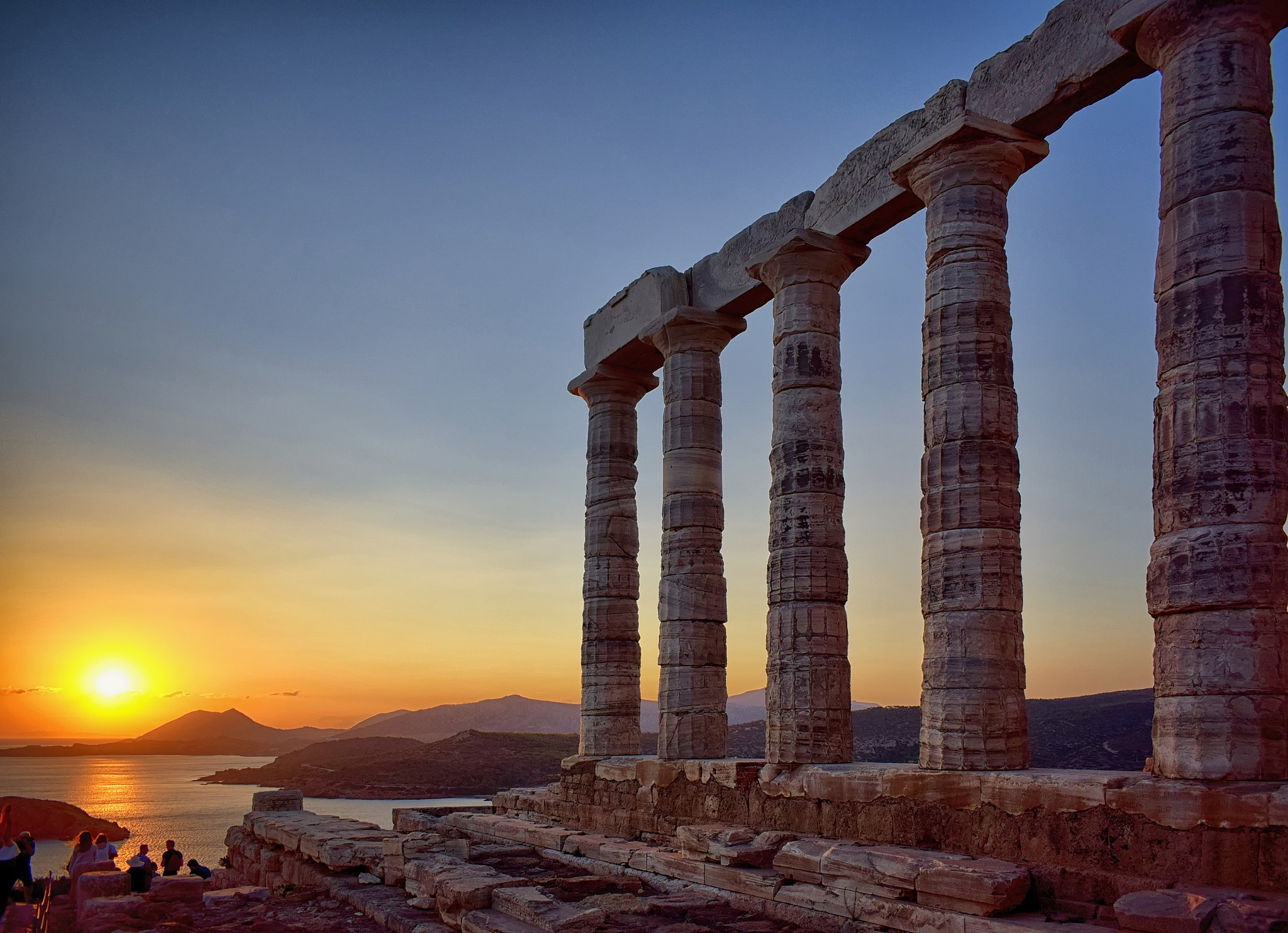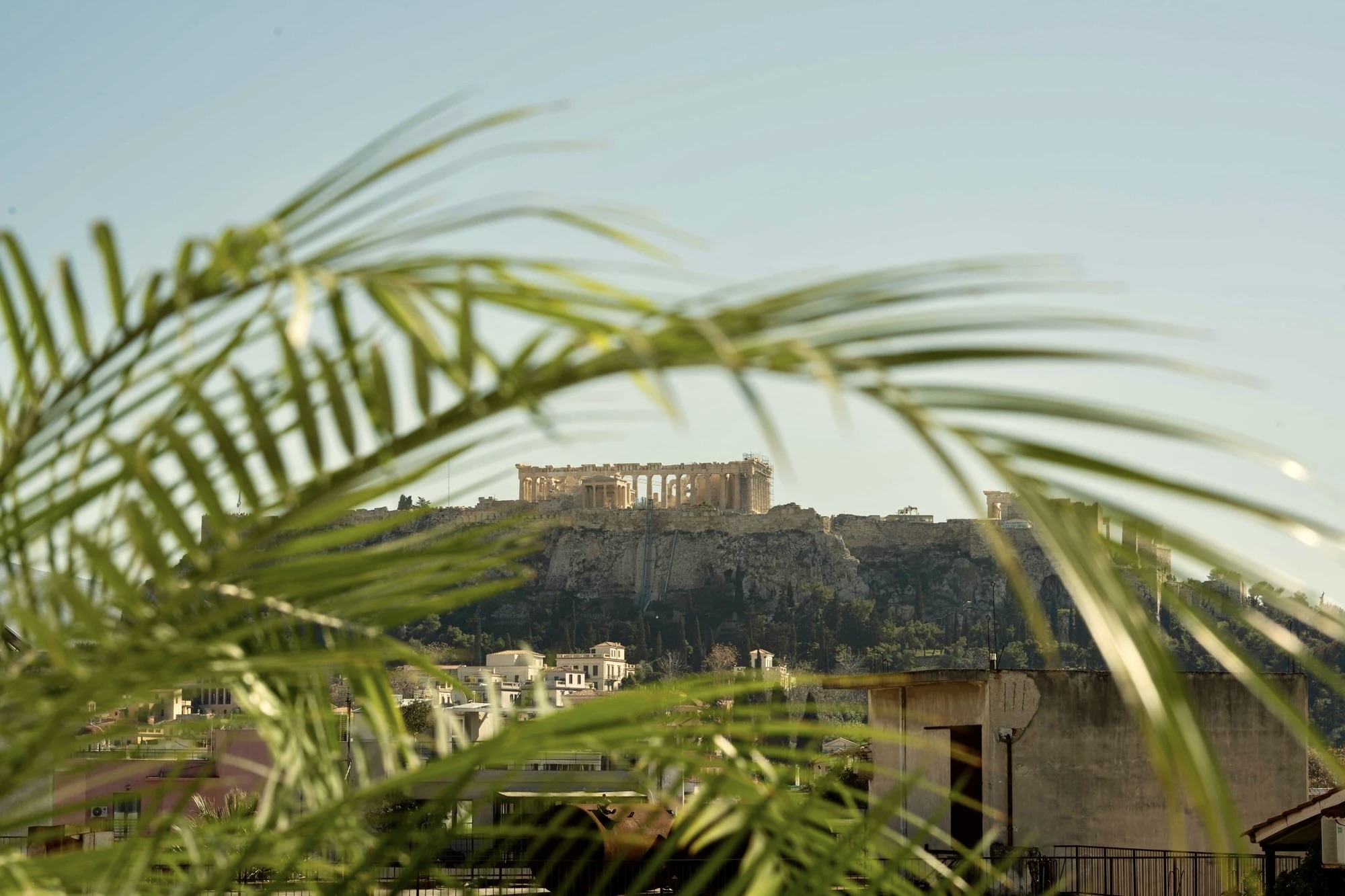Sounion is possibly the best spot in the wider Athens area to enjoy the sunset and sunrise with magnificent ruins framing the sun.
Situated on the southernmost point of the Attica region, Sounion is an ideal destination for a one-day excursion and it is worth going there via the coastal route which offers a marvellous seaside drive. The wider Athens region’s stretched coastline offers exceptional swimming spots, views and, of course, charming little tavernas for a meal and wine as part of an alternative to the city itself.
During antiquity, Cape Sounion was an important strategic location for the Athenian city-state. From this point, Athens controlled the sea corridor towards the Aegean Sea, Piraeus, its central port, as well as the Lavrion peninsula in southeast Attica, whose rich silver mines helped the city of Athens become a superpower in the 5th century BC.
The Sounion deme belonged to the tribe of Leontis and, following state reorganization by Athenian lawgiver Kleisthenes in 510 BC, included, in addition to the fortress, sanctuaries as well as the region between Lavrion, Megala Pefka, Kamariza and the cape.
The sanctuary of Poseidon, god of the sea, and the settlement were both within Sounion’s fortified area. It was entered from a northwestern gate, while the settlement needed to be crossed in order to reach the sanctuary. It had already reached a peak during the archaic period of the 7th and 6th centuries BC, even though a monument had not yet been constructed. Towards the end of this period, construction of a monumental temple had begun, but it was destroyed by the Persians before being completed. The surviving temple was built over the foundations of this destroyed temple in approximately 444-440 BC, in Doric order, with local marble from the Archileza region. The temple flourished during the Classical and Hellenistic periods. The temple and settlement occupied an area of approximately four hectares, surrounded by a wall whose width reached as much as three metres.
The fortress was also equipped with a port on the sandy bay directly below. Warships were moored at this point, which also served as a trading location, and shipyards had also been developed for the storage and maintenance of the warships. One of these shipyards is carved into the rocks of the cape, near the entrance of the bay. This recessed area measures 11.50 metres in width, is 20.50 metres long, and has two parallel ditches, each 1.25 metres deep, which were used to lift and launch vessels.
Today, Sounion, besides being a significant archaeological site, is also a lovely area for swimming and an exceptional point to enjoy sunrise and sunset. If you like waking up extremely early, set your alarm clock for the pre-dawn hours and head out to Sounion for a marvellous sunrise from the superb cape. Park your vehicle at the archaeological site’s spacious parking facility and walk eastwards to the small protruding section directly opposite the Temple of Poseidon. Settle at a spot of your liking and enjoy the complete tranquillity and vastness of the sea during the wait for the sun’s gradual emergence over the nearby island of Makronisos. Shades of yellow and orange, will, minute after minute, take over the gray colour of the night sky and the Temple of Poseidon, behind you, will gradually acquire the colours of the day.
Sunset worshippers should climb up the hill in the early afternoon hours, offering time for some exploration of the temple and Sounion’s archaeological site. Enjoy the view, reaching all the way out to Kea (Tzia), and watch as the sun slowly disappears into the Saronic Gulf, gradually creating shades of purple along the horizon. Once night has fallen, give yourself some time to listen to the waves and let your mind travel back to the era when the temple and settlement were both at their peak.
Combine your visit to Sounion with a stroll out to one of the lovely beaches in the area or visit the Sounion National Park, for a walk through the ancient mines, pines, arbutus trees and wild olives, and top off your day with a stopover at one of the numerous little tavernas for good wine and food.
Opening hours: 09:30-sunset. Entrance fee: €10, tel. +30 22920 39363, http://odysseus.culture.gr
Read also:
Trekking at an ‘open-air museum’ of geology and ancient technology in Greece
Christos Kapralos Museum on Aegina: Visiting the prominent sculptor’s home and studio
Greece: The return of tourists to archaeological sites and museums



